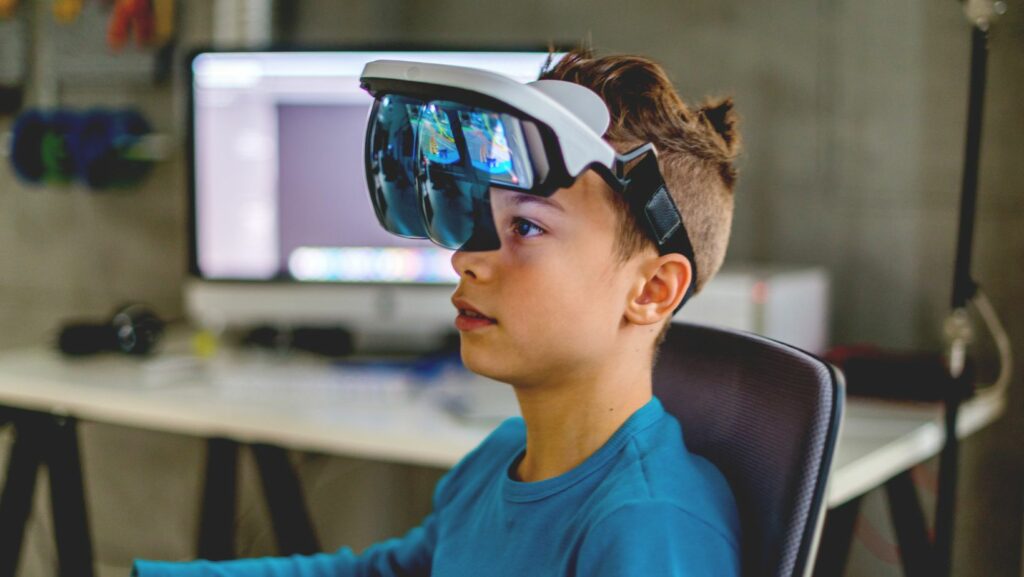Augmented reality applications have revolutionized the way we interact with technology, blurring the lines between the physical and digital worlds. From enhancing gaming experiences to transforming how we shop, work, and learn, AR has opened up a realm of possibilities. It’s reshaping industries and offering innovative solutions to everyday challenges.
Imagine being able to visualize furniture in your home before making a purchase or receiving real-time navigation cues overlaid on the streets as you walk. Augmented reality applications are changing the way we perceive and engage with our surroundings, making tasks more efficient and engaging.
Augmented Reality Applications
Early Development and Milestones
 Augmented reality (AR) technology has come a long way since its inception. The early development of AR applications can be traced back to the 1960s when computer scientist Ivan Sutherland created the first head-mounted display system, known as the “Sword of Damocles.” This milestone marked the beginning of AR technology, laying the foundation for future advancements in the field.
Augmented reality (AR) technology has come a long way since its inception. The early development of AR applications can be traced back to the 1960s when computer scientist Ivan Sutherland created the first head-mounted display system, known as the “Sword of Damocles.” This milestone marked the beginning of AR technology, laying the foundation for future advancements in the field.
Throughout the following decades, AR technology continued to evolve with significant milestones along the way. In the 1990s, researcher Tom Caudell coined the term “augmented reality,” paving the way for a more focused exploration of blending digital information with the real world. This period saw the emergence of early AR applications primarily in industrial and military training contexts, setting the stage for broader commercial applications in the future.
Current Technologies and Platforms
Today, augmented reality applications have become more accessible than ever, thanks to advancements in technology and the widespread adoption of smartphones and wearable devices. Leading tech companies, such as Apple and Google, have invested heavily in AR development, integrating AR capabilities into their devices and operating systems.
Furthermore, the rise of AR software development kits (SDKs) and platforms has democratized AR app creation, allowing developers to easily build immersive AR experiences across various industries. Platforms like ARKit, ARCore, and Unity have made it easier for developers to create AR content without the need for extensive programming knowledge.
Augmented Reality in Education
Enhancing Learning Experiences
 Augmented reality (AR) in education has revolutionized the way students learn by providing immersive and interactive experiences. By overlaying digital content onto the real world, AR enhances visualization and engagement, making complex concepts more understandable. For instance, in biology classes, students can use AR apps to visualize 3D models of cells and organs, allowing for a deeper understanding of anatomical structures.
Augmented reality (AR) in education has revolutionized the way students learn by providing immersive and interactive experiences. By overlaying digital content onto the real world, AR enhances visualization and engagement, making complex concepts more understandable. For instance, in biology classes, students can use AR apps to visualize 3D models of cells and organs, allowing for a deeper understanding of anatomical structures.
Real-World Case Studies
Several real-world case studies demonstrate the effectiveness of augmented reality in education. For example, the Cleveland Clinic collaborated with Case Western Reserve University to develop an AR app for medical students to study anatomy. The app superimposes detailed 3D models of the human body, allowing students to explore and interact with anatomical structures in a more engaging way.
Another notable case is the use of AR in historical education. The Auschwitz Museum partnered with the Survivors of the Shoah Visual History Foundation to create an AR app that overlays historical images onto present-day locations at the Auschwitz concentration camp. This powerful tool provides a unique perspective on history, allowing users to witness the past in a tangible and immersive manner.
Augmented Reality in Health Care
Improving Diagnosis and Treatments
 Augmented reality (AR) in health care has revolutionized the way medical professionals approach diagnosis and treatment procedures. By integrating AR technology into healthcare practices, doctors can now visualize complex medical data in real-time, leading to more accurate diagnoses and tailored treatment plans. For instance, AR applications allow surgeons to overlay patient scans during procedures, providing them with vital information and enhancing surgical precision. This advancement not only reduces the margin of error but also improves patient outcomes by enabling personalized and precise treatments based on individual anatomy.
Augmented reality (AR) in health care has revolutionized the way medical professionals approach diagnosis and treatment procedures. By integrating AR technology into healthcare practices, doctors can now visualize complex medical data in real-time, leading to more accurate diagnoses and tailored treatment plans. For instance, AR applications allow surgeons to overlay patient scans during procedures, providing them with vital information and enhancing surgical precision. This advancement not only reduces the margin of error but also improves patient outcomes by enabling personalized and precise treatments based on individual anatomy.
Training and Simulation for Professionals
In the realm of professional training and simulation, augmented reality has become an invaluable tool for healthcare professionals. AR simulations offer a safe and controlled environment for training medical students, nurses, and other practitioners in various medical scenarios without the need for real-life patient interactions. Through AR-enhanced simulations, healthcare professionals can practice surgical techniques, emergency responses, and patient care protocols in a realistic yet risk-free setting.

